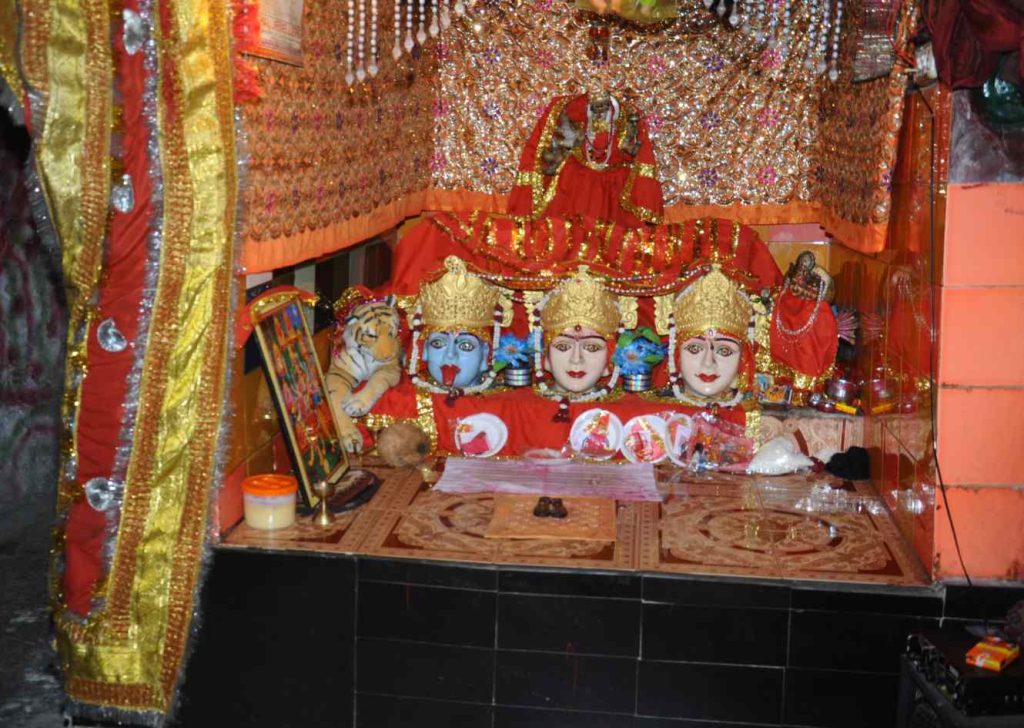Vaishno Devi Is The Divine Feminine Power

Vaishno Devi, a popular religious pilgrimage site located in the Indian Union Territory of Jammu and Kashmir, epitomizes the spiritual yearnings and religious ethos that are central to Hinduism. Nestled amidst the serene and magnificent hills of the lower Himalayas in Katra, the shrine of Vaishno Devi attracts millions of devotees every year from different corners of the world, making it one of India’s most visited religious sites.
The Legend
The legend and mythology surrounding the shrine of Vaishno Devi, also referred to as Mata Rani, are rich and deeply rooted in the spiritual history of India.
According to the legend, Mata Rani is an incarnation of the Mother Goddess, or Adi Shakti, the eternal cosmic energy that permeates the universe. It’s believed that the Goddess took the form of a human (Vaishno Devi) to protect righteousness and uphold Dharma.
The tale describes that the three deities – Vishnu, Brahma, and Shiva – created a beautiful young girl, Vaishno Devi, from their collective energies to defeat the buffalo demon Mahishasura. The girl asked for the boon that she would merge with the divine energies again after accomplishing her mission on earth.
A sage named Bhairon Nath noticed the divine girl, who had grown up and started pursuing her, attracted by her extraordinary beauty. Vaishno Devi made a long and arduous journey across the country to escape from him. Finally, she arrived at the holy cave at Trikuta Mountain and decided to meditate there.
Eventually, Bhairon Nath found the holy cave. Upon being located, Mata Rani became the ferocious Goddess Kali and beheaded Bhairon Nath. As he was dying, Bhairon Nath repented for his actions and prayed to the Goddess for mercy. In her infinite compassion, the Goddess forgave him and granted him the boon that every devotee, after having her darshan, must have his darshan too. His temple is located close to the Vaishno Devi shrine.
After defeating Bhairon Nath, Vaishno Devi decided to shed her human form and turn it into a rock face. She immersed herself in meditation forever, and that location turned into the sanctum sanctorum, the holy cave of Vaishno Devi.
The Shrine
The pilgrimage to Vaishno Devi is as much a spiritual journey as a physical one. The trek, an arduous 12-kilometer journey from Katra to the shrine, is imbued with an air of devotion, echoed in the chants of ‘Jai Mata Di’ reverberating across the hills. It is believed that the Goddess beckons her devotees to her abode, and only those who receive her divine call or ‘bulawa’ can undertake the journey.

The main shrine houses three rock formations called ‘Pindis,’ representing the three forms of Shakti: Mahakali, Mahalakshmi, and Mahasaraswati. These three forms represent the creative, preservative, and destructive aspects of the Divine Mother. Interestingly, unlike other Hindu temples, there are no traditional statues or images inside the cave shrine, only the three ‘Pindis,’ which are worshipped as manifestations of the Goddess.
Cultural and Religious Significance
The pilgrimage to Vaishno Devi holds profound religious and spiritual significance. Devotees undertake the journey with deep faith, seeking the blessings of the Goddess, fulfillment of wishes, or simply a spiritual experience. The journey is often considered a path to attain spiritual enlightenment, transcending the bounds of the material world.
Numerous festivals and events are celebrated with fervor at Vaishno Devi, the most notable being Navaratri, when the shrine is embellished in grandeur, and the air is filled with a heightened sense of devotion.
The shrine of Vaishno Devi stands not only as a testament to the enduring faith of millions of devotees but also as an emblem of the spiritual heritage of India. It embodies the philosophy of ‘Shakti,’ the divine feminine power, highlighting the importance of the feminine divine in Hinduism. Through her, devotees seek solace, divine blessings, and a spiritual connection that rejuvenates their spirit and gives them the strength to navigate life’s trials and tribulations. The pilgrimage to Vaishno Devi is a faith, devotion, and spiritual awakening journey.
